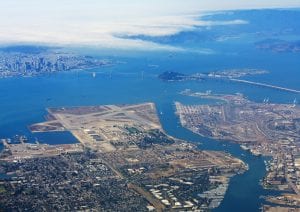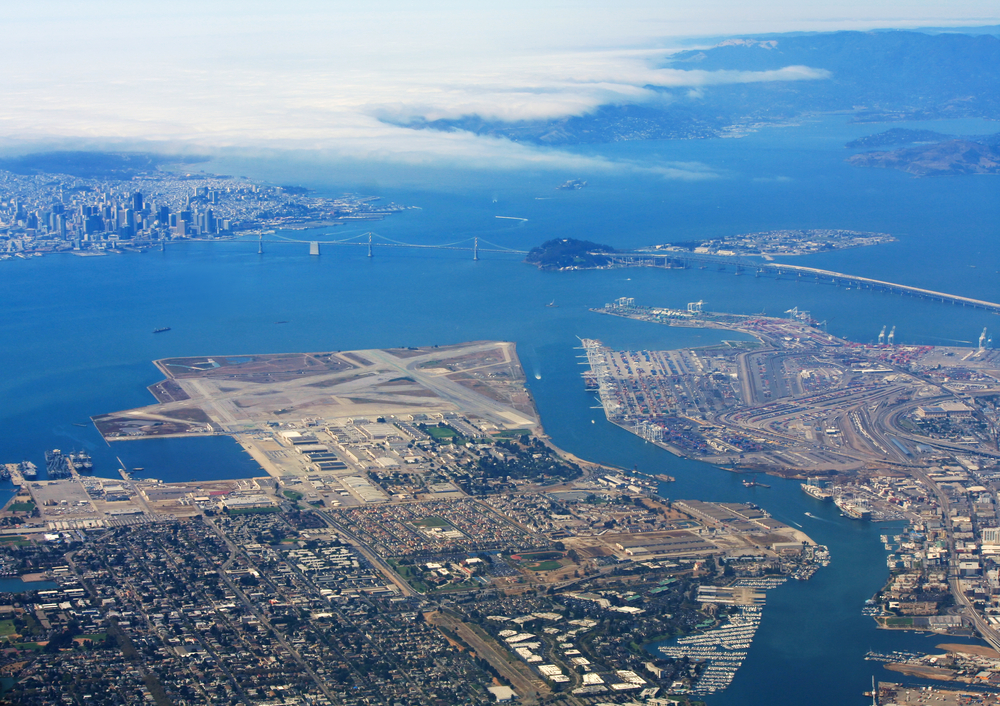
The U.S. Environmental Protection Agency announced $4.2 million in federal grants to local, regional, and national entities for projects to restore wetlands, improve water quality and “green” the urban landscape in and around San Francisco Bay.
“Protecting San Francisco Bay is a top priority for EPA,” said Tomás Torres, EPA’s Water Division Director for the Pacific Southwest. “The impact of these projects will go beyond the bay, helping surrounding communities build resilience to the impacts of climate change, including sea level rise.”
San Francisco Bay is a designated “estuary of national significance” under the Clean Water Act. The bay and its tributary streams, situated in an urban area with more than seven million people, provide crucial fish and wildlife habitat at the heart of the larger Bay-Delta Estuary. The bay’s users and nearby residents are all affected by threats to its ecological health, including legacy pollutants like mercury and PCBs, polluted stormwater, and the challenges of drought and climate change.
EPA awarded its 2016 San Francisco Bay Water Quality Improvement Fund grants for the following projects:
The San Francisco Estuary Partnership received $1,667,683 for watershed redesign, tidal wetlands restoration and urban greening efforts. Working in partnership, SFEP, the San Francisco Estuary Institute and 15 other local organizations, will implement several projects to enhance resilience to climate change impacts in the South Bay. For example, a series of green infrastructure project installations will reduce stormwater runoff and create 13 acres of native wetland and riparian habitats in the cities of Sunnyvale, Mountain View, and East Palo Alto. Green stormwater infrastructure helps capture pollutants before they reach the bay. In addition, the Santa Clara Valley Water District is a key partner for the design and realignment of Calabazas and San Tomás Aquino Creeks, which will reconnect watersheds to the baylands and reduce flood risk.
This exciting and timely project will advance the region’s capacity to increase shoreline resilience to climate change with multi-benefit green infrastructure and habitat restoration,” said Caitlin Sweeney, director of the San Francisco Estuary Partnership.
Ducks Unlimited received $1,677,683 for wetlands restoration in Mountain View, as part of the larger South Bay Salt Pond Restoration Project. The restoration of 690 acres of tidal wetlands and 20 acres of upland transitional habitat is an important investment towards reaching the goal of 100,000 acres of tidal marsh around San Francisco Bay and building resiliency to sea level rise along the bay’s shoreline. Key partners include the California State Coastal Conservancy, the San Francisco Bay National Wildlife Refuge, and the Santa Clara Valley Water District.
“We are thrilled to work with EPA and many other partners to restore the Mountain View baylands to benefit waterfowl, shorebirds, and other wetland-dependent species,” said Renee Spenst, regional biologist for Ducks Unlimited. “Creating habitat and associated public access amenities at the edge of this highly urbanized region of the bay will create opportunities for millions of people to enjoy the site and watch as it changes over the coming decades.”
The City of San Pablo received $864,634 to address water quality issues through green infrastructure and community education. It will install more than 11,000 square feet of roadside green infrastructure, such as bioswales and other structures that collect stormwater runoff and filter it through plant roots and soil. This will decrease flooding, increase infiltration into the groundwater, and reduce the amount of trash and pollutants, such as PCBs and mercury, that reach the bay. The City of San Pablo will also engage with local residents and high school students about local creek conditions and the effects of trash in waterways. Key partners will include the local nonprofit Earth Team, Contra Costa County Clean Water Program, the City of Richmond, and community members from the City of San Pablo.
“This investment in our green infrastructure will allow our city the opportunity to partner with the region in our collective goal of protecting our bay,” said Rich Kinney, mayor of the City of San Pablo. “On behalf of the City of San Pablo, I want to thank the EPA for their commitment to our community.”
Since 2008, EPA’s San Francisco Bay Water Quality Improvement Fund has provided more than $44 million in competitive grants for 61 projects that are restoring water quality and wetlands, reducing polluted runoff, and greening development in San Francisco Bay and its watersheds. These grantees and their partners represent a network of more than 70 government agencies, resource conservation districts, land trusts, watershed groups, and non-profit organizations across the Bay Area’s nine counties. This network has leveraged EPA’s investment with an additional $153 million in funds from partner agencies and organizations, resulting in more than $195 million invested in San Francisco Bay and its watersheds.
For more on EPA’s San Francisco Bay Water Quality Improvement Fund, visit:
http://www.epa.gov/sfbay-delta/sf-bay-water-quality-improvement-fund










